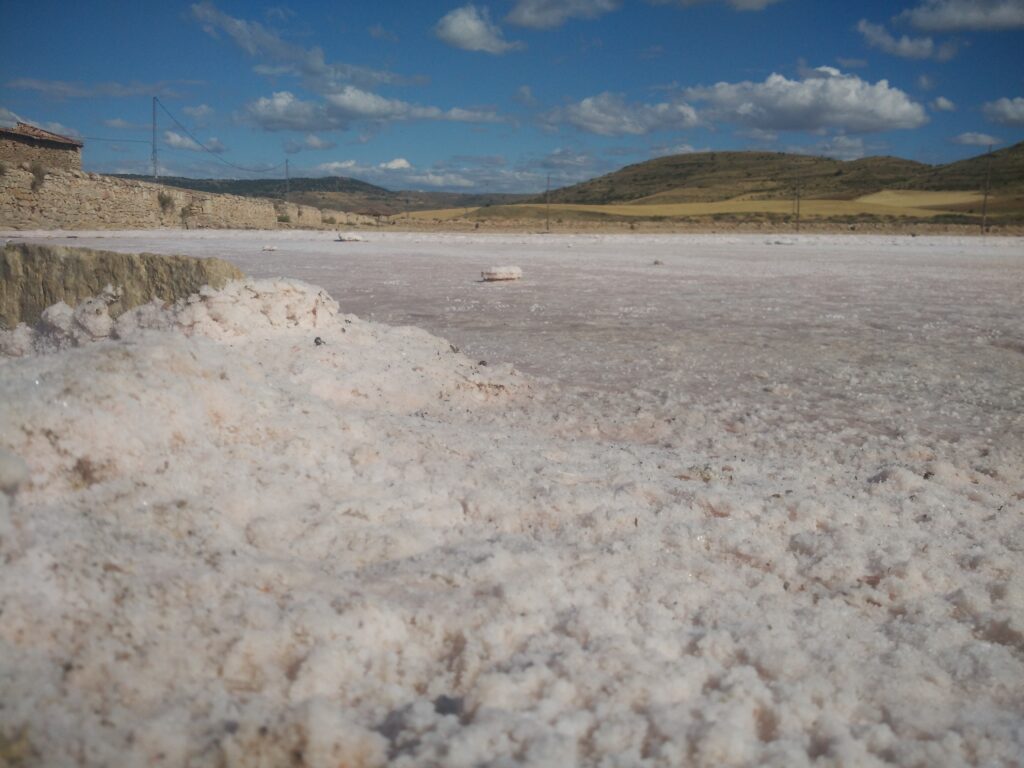Warning: Undefined array key "ssba_bar_buttons" in /var/www/wp-content/plugins/simple-share-buttons-adder/php/class-buttons.php on line 598
Warning: Undefined array key "ssba_bar_buttons" in /var/www/wp-content/plugins/simple-share-buttons-adder/php/class-buttons.php on line 598
Warning: Undefined array key "ssba_bar_buttons" in /var/www/wp-content/plugins/simple-share-buttons-adder/php/class-buttons.php on line 598
Warning: Undefined array key "ssba_bar_buttons" in /var/www/wp-content/plugins/simple-share-buttons-adder/php/class-buttons.php on line 598
Warning: Undefined array key "ssba_bar_buttons" in /var/www/wp-content/plugins/simple-share-buttons-adder/php/class-buttons.php on line 598

Although currently abandoned, Imón salt mines were the largest in the area and for a long time, the most productive ones in the Iberian Peninsula. It is believed that the Romans already extracted salt from the area in the first century of our Era, but the mines themselves were not built until the 10th century.
The monarchs always took advantage of them, granting nobles and the clergy some of their benefits. It was King Alfonso VI who finally granted the bishopric of Sigüenza its exploitation. Carlos III expanded the existing infrastructures by building large warehouses, troughs and canals that are still standing.
The current salt mines consist of a set of warehouses, located in the central area, and a series of pools, annealed ponds and waterwheels that are supported by a series of canals and gullies that serve as drains for excess water. The set of buildings date from the 18th century and have been reformed and adapted in the 19th and 20th centuries.
The oldest warehouses that remain are those of San Antonio and San José, whose large dimensions guaranteed a sufficient capacity for the salt flats. San Antonio warehouse preserves a complete entrance portico, based on large octagonal stone columns and a rear access ramp to the mezzanine floor. It has a chimney attached, belonging to the small power station that served the salt flats. San José warehouse has two buildings attached to its main façade. In its rear access it preserves a tower with part of the machinery that helped to raise the wagons up the ramp.
Another building that survives nowadays is the guardian’s house, located in the southern part of the so-called “Tiñosa” pool. The materials used in all buildings are ashlar and masonry in the walls and wood in the interior structures and roofs. The roofs are made of ceramic tile.
The operating mode may seem rather simple: the salty water is extracted from the subsoil through wells of about four or five meters deep, then an octagonal waterwheel supplies water to the annealed ponds where it is heated and from there, it is supplied to the pool where the salt is deposited.
The operation of the salt mines is intense from May to October, however, and depending on the weather, salt can also be produced during the rest of the year.
Declared Site of Cultural Interest (Bien de Interés Cultural), Imón salt mines were active until 1996 and some of the leftovers of the last harvest are still kept in the main warehouses. The site has been recently fenced but it is still worth visiting, even though its state of conservation is quite poor. The tiny but cute village nearby, Imón, is one of the districts of Sigüenza, and there are a few hotels and bars to stop over.
If you want to see a salt mine which is currently operating, a bit further away from Sigüenza but still close enough, we can find Saélices de la Sal, a lovely village whose San Juan salterns were apparently installed in 1203, although their current appearance dates from the eighteenth century. There is a guided tour available and I will definitely do it myself one of these days for sure! Check their website here.





